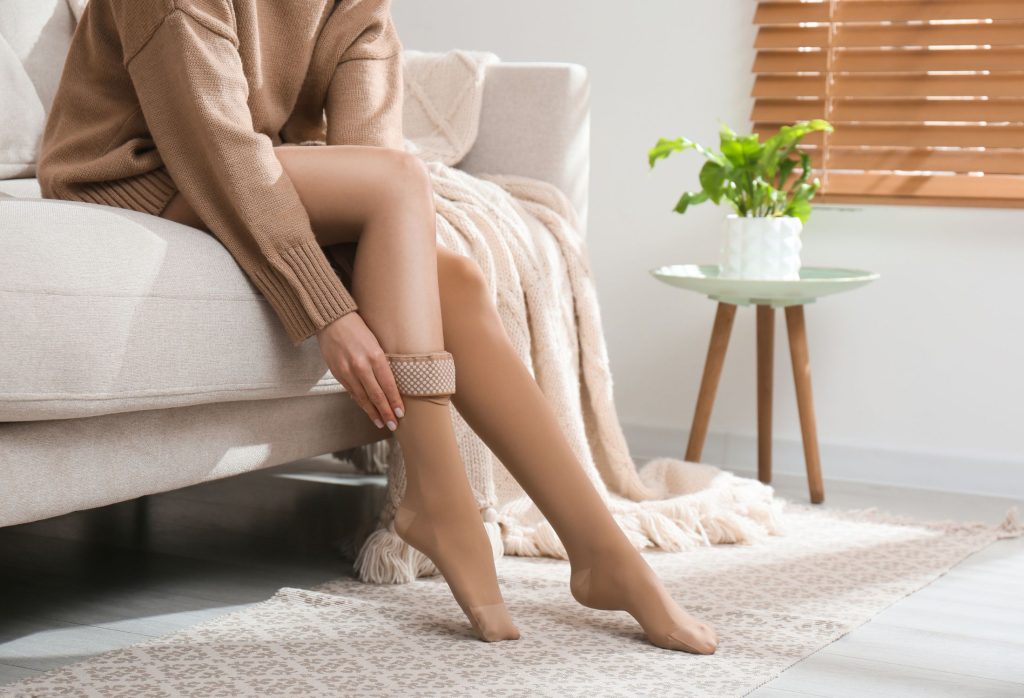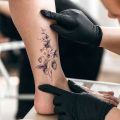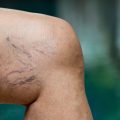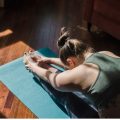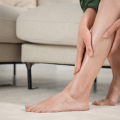Search a topic
Last updated on April 22, 2024
Spider veins are tiny, blown venules and capillaries that are purple or red. While they typically don’t cause any discomfort, many want to avoid getting spider veins because of their appearance. So, to help you keep your veins healthy and in good shape, here’s how to prevent spider veins.
Spider vein causes
The first step in spider vein prevention is knowing what causes them to begin with. Generally, spider veins develop for a few different reasons:
- Genetics: inheriting weaker veins or vein valves makes it more likely that you’ll develop the condition
- Age: as we grow older, our veins tend to get weaker, leading to blood pooling and expanding the vein
- Pregnancy: increased blood volume, the pressure of a growing baby and expanding uterus, and increased levels of progesterone take a toll on your veins
- A sudden increase in pressure: weightlifting, childbirth, and certain injuries can drastically and suddenly increase blood volume in a vein, making it permanently expand
- Unhealthy lifestyle: sitting or standing for long periods without a break, not getting enough exercise, smoking, and eating a poor diet can all contribute to vein disorders
As you can see, some causes are easier to work around than others. But while there’s no guarantee you’ll prevent spider veins entirely (especially if the cause is genetic or age-related, which can’t really be helped), you can take steps to reduce your risk.
How to prevent spider veins
Exercise
While some forms of exercise (like weightlifting and high-contact sports) may increase the risk of spider veins, others reduce it. Ideally, you should focus on moderate-intensity activities that work the legs. These include walking, yoga, pilates, swimming, and cycling. You can also do a leg and core workout routine at home. Exercises like glute bridges, bodyweight squats, calf raises, and dead bugs are great for building muscle and supporting vein activity around the legs and core.
Compression for spider veins
Compression socks work by stimulating the muscles and gently squeezing the veins. This effect helps move blood out of congested surface veins and into the deep veins and then helps the deep veins pump it up to the heart. Compression socks are especially important to wear on long-haul flights and are a good idea for long days at the office. Just make sure your stockings fit right and are high-quality to avoid skin irritation and cutting off your circulation. Bauerfeind stockings are a good option here.
Elevate your legs
Your leg veins have to fight the pull of gravity to get blood to where it needs to be. By propping your feet at heart level, you reduce the strain and help get any congested blood moving. Try to keep your legs elevated when you’re resting at home. You can also do the Legs Up the Wall stretch, which has the additional benefit of reducing muscle tension in the calves and hamstrings, helping them better support your veins.
Don’t sit or stand too long
Your veins rely on muscle movement to pump blood upward. When you’re still for long periods, the muscles can’t offer much support. So, make sure you move around every 30 minutes or so. Go for a quick walk, do some squats, or at least wiggle your feet around under your desk.
Eat right
A diet rich in flavonoids, antioxidants, vitamins, and fibre goes a long way in protecting your veins. Make sure to include the following foods in your dietary intake:
- Oats
- Leafy greens
- Strawberries
- Almonds
- Eggs
- Fatty fish
- Tea – especially green, black, and white varieties
- Ginger
Protect your skin from the sun
The veins that can turn into spider veins run very close to the skin’s surface. Too much sun exposure breaks down collagen much faster. Since collagen is a fundamental building block of the skin and veins, it’s not hard to see why too much sun without protection can lead to vein issues.
Hence, you should always protect yourself with sunblock, suitable clothing, sunglasses, and a hat between 10 am and 4 pm. However, outside these hours, you should take 15 minutes to soak in the sun’s rays. Sunlight helps with vitamin D synthesis, and vitamin D is essential for vein health.
Keep comfortable to avoid restricting vein function
When possible, opt for low-heeled shoes that aren’t tight around the feet. You should also avoid restrictive clothing when you can. Tight clothes can restrict blood flow, making your circulatory system work harder to move blood around. High heels, meanwhile, lock your ankle in an awkward position, which prevents the calf muscle from fully extending, thus impairing its natural pump function for your leg veins.
Preventing spider veins: the bottom line
Spider veins are often caused by genetics and ageing, so it’s not possible to avoid them with 100% certainty. However, living a healthier lifestyle, wearing compression socks, and elevating your legs at the end of a long day can help reduce your risk.
If you do end up developing the condition, however, there are plenty of treatments available. Give us a call at 0483948908 or fill out the form below.

